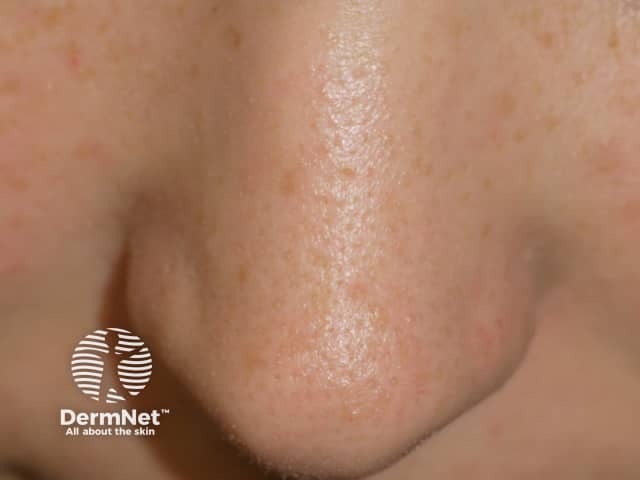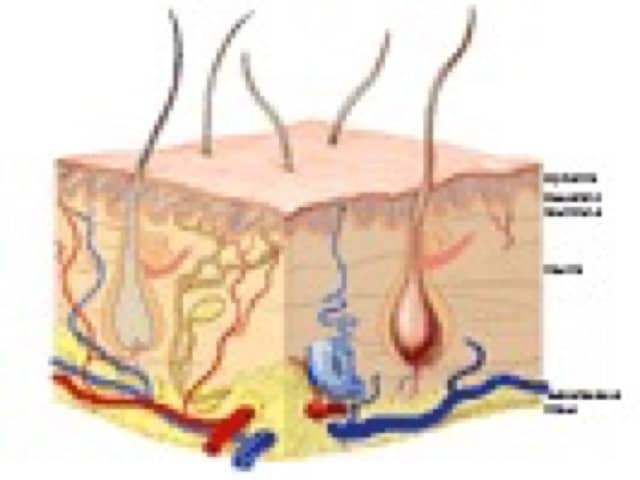Main menu
Common skin conditions

NEWS
Join DermNet PRO
Read more
Quick links
Author: Lydia Chan, Dermatology Registrar, Waikato Hospital, Hamilton, New Zealand. Editor-in-Chief: Hon A/Prof Amanda Oakley, Hamilton, New Zealand. Copy editor: Maria McGivern. March 2017.
Enlarged pores are depressions in the facial skin surface that contain one or more openings to the ducts carrying sweat and oil from their respective eccrine glands and sebaceous glands.

Enlarged pores

Skin structure
Enlarged pores can be seen at all ages and in all ethnic groups. Certain ethnic groups may have larger pores, particularly those of African and Indian ancestry. Pores often appear larger with age.
There are conflicting data on whether men or women are more prone to large pores. In women, pore size may fluctuate during the menstrual cycle, with the largest pore size occurring during ovulation.
Factors that may lead to enlarged pores include:
Acne is associated with enlarged pores — when sometimes open comedones (blackheads) can be seen within a pore. Inflammatory acne may cause enlarged pores through weakening sebaceous gland and hair follicle openings, making them more prone to blockage.
Treatments that focus on preventing and shrinking large pores are not very effective. They include:
Oral treatments that are used for acne may also help. These include:
Physical treatments targeting the sebaceous glands may help enlarged pores. These include: